PO & invoice matching process: The guide to 2 & 3-way matching
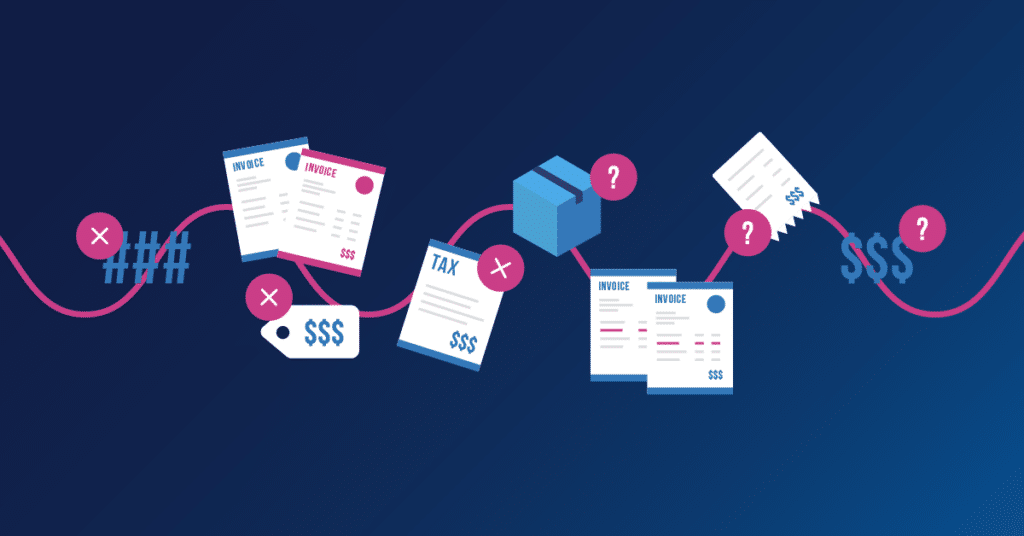
Fraud and errors cost businesses big.
According to the Association for Finance Professionals 2024 Payments Fraud and Control Survey Report, 80% of organizations were victims of payment fraud — a 15% increase over the previous year.
One-third (30%) were unable to recover the stolen money.
Your business is putting money at risk if it isn’t protected against payment fraud and human error. Invoice matching is the first line of defense against fake or duplicate invoices and the best way to prevent data entry, coding, and shipping errors that can slow down your AP process.
Read on to discover the benefits of implementing an automated invoice matching process for your accounts payable department. We’ll examine the different matching types, the challenges of streamlining invoice matching processes, and how to set up an effective automated invoice verification workflow.
Let’s start with a business scenario explaining how invoice management works and why it’s so important.
Why is invoice matching important to accounts payable?
Invoice matching involves cross-checking the details on an invoice with other supporting documents, such as purchase orders, contracts, and shipping documents, to ensure they match. If the details match, the invoice is verified, and AP sends it for approval. If there are discrepancies, the invoice fails the validation process, and AP investigates further to confirm the details.
Invoice matching business scenario: BTB Outdoor Gear
Our fictional company, BTB Outdoor Gear, is a family-owned sports gear manufacturer in the Midwest. It makes fishing, hunting, and adventuring gear sold in stores worldwide. Michelle, the founder’s daughter, is taking over the company from her father, who built the business from scratch and is now enjoying a happy retirement.
BTB has been slow to implement technology to streamline and improve its financial operations despite its growth. Rising costs are a concern as BTB’s manual processes reach capacity. To remain profitable, they need to streamline these processes and get costs under control.
Another challenge is the rapidly rising consumer demand for sustainable and recyclable products. To meet this demand and stay competitive, BTB must align its manufacturing processes and supply chain with sustainability standards and regulations.
BTB’s global supply chain has expanded as the company has grown. It now sources textiles, mechanical components, plastics, packaging, and other materials from over 1,000 suppliers worldwide. Also, as BTB’s product manufacturing and sustainability requirements grow and evolve, its purchase orders, shipping documents, and supplier receipts are becoming more complex, often containing hundreds of detailed line items. BTB must streamline and optimize its accounts payable processes so it has the capacity to process and pay invoices efficiently.
To meet these challenges and remain competitive, BTB is looking for ways to automate its business processes, better integrate its supply chain, and streamline its procure-to-pay workflows.
One of its top priorities is improving its manual PO-to-invoice matching processes. Let’s look at why matching is so important.
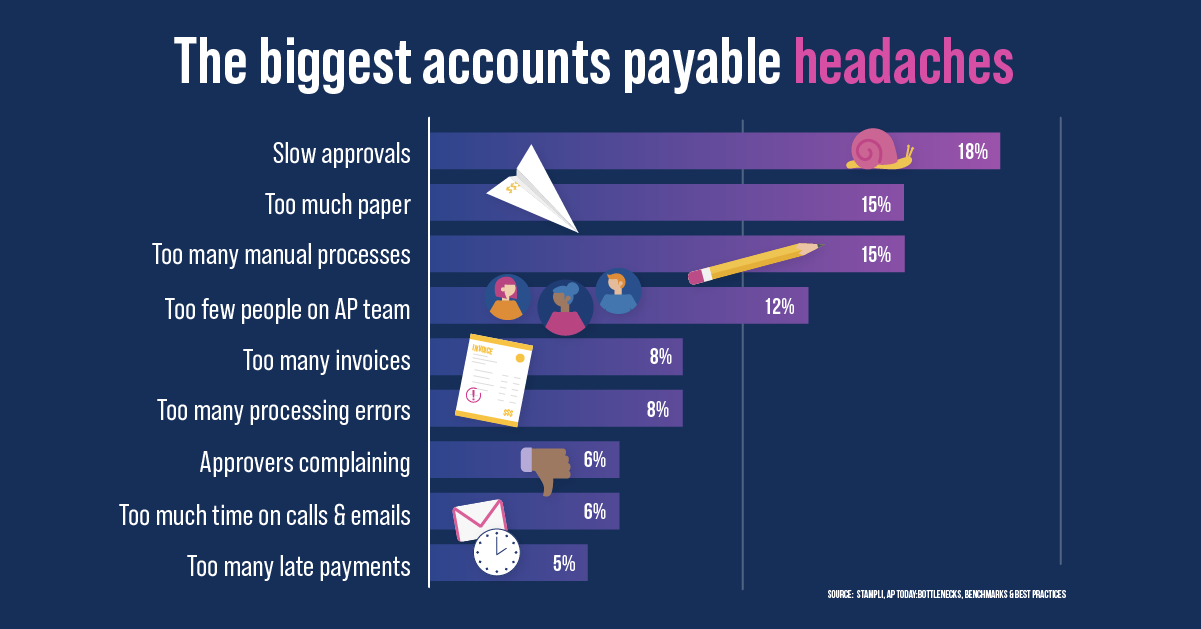
Benefits of automated PO matching workflows
Many of BTB’s suppliers send paper invoices. To verify the invoices, BTB’s AP team must manually compare the invoice details with the associated purchase orders and shipping documents. As BTB has grown, the volume and complexity of the invoices and other documents have increased. Their manual AP processes are at capacity, and the company is falling behind on matching invoices.
Michelle says, “Our team members are all-stars. They’ve been here forever, and they know the job inside out. Unfortunately, with our new sustainability and purchasing policies, we’ve added a lot of new suppliers, and our invoices are getting more complicated. As good as our AP team is, they simply can’t keep up by manually checking every invoice and PO for discrepancies. We’ve already had a few missed payments and way too many embarrassing phone calls with angry vendors.”
Michelle sees several benefits of streamlining and automating BTB’s invoice matching processes.
Lower labor costs
Manual PO matching is labor-intensive, expensive, and not easily scalable. “We run tight margins,” says Michelle, “I’d like to avoid adding more AP staff if possible, especially if it doesn’t make us more efficient.”
Finance operations platforms boost productivity by eliminating slow manual tasks, improving operational efficiency, and freeing employees to focus on more strategic work. “My AP team has a ton of experience,” says Michelle. “I’d love to get them more involved in procurement, finding ways to improve our vendor relationships.”
Plus, as your business grows, automation lets you scale invoice processing and AP operations without requiring added headcount — letting your business allocate resources to higher-value strategic initiatives.
Reduced errors and fraud
Manual invoice matching is prone to errors that can lead to overpayments, vendor disputes, or non-compliance with purchasing policies. Michelle says, “We try to check every invoice, but the truth is we’re not doing a great job of that. Our AP team is super busy trying to pay vendors on time, and it takes hours to match invoices and POs line-by-line, especially for complex jobs like multi-PO or international orders. Sometimes they make mistakes, or they don’t have the time to check every line item. Plus, each team member has their own way of matching invoices, so if someone is on vacation it’s really hard for another employee to take over their workload.
It wouldn’t surprise me at all if we were paying for stuff we never ordered.”
Finance operations platforms check every vendor invoice detail against the PO and flag discrepancies for investigation. By detecting errors and duplicate or fraudulent invoices, the platforms ensure that BTB only pays for the products and services it orders.
Faster invoice processing
Finance operations software reduces invoice processing cycle times by automating invoice data capture, entry, and coding. It also provides accurate invoice data that improves invoice matching accuracy and efficiency. Faster processing means faster payments and improved vendor relationships, freeing BTB’s AP teams to focus on higher-value tasks.
Better product profitability
BTB needs to monitor its input costs to remain profitable in the hypercompetitive sporting goods industry. Automated invoice matching makes it easy for BTB’s product teams to verify input costs by ensuring the invoice costs match the PO costs for each input.
Improved cash flow
Verifying invoices means fewer invoice errors and less chance of overpayments, which is great for managing cash flow. “I’d love to get a better idea of how much cash we have on hand,” says Michelle. “We seem to be constantly late on payments, and I’m sure we’re missing out on discounts.”
More protection against fraud
BTB’s paper-based processes make it vulnerable to payment fraud. Automated matching gives them a first line of defense by detecting and flagging invoice discrepancies that human reviewers might miss.
How purchase order and invoice matching works
BTB uses three matching methods to verify invoices: 2-way matching, 3-way matching, and 4-way matching. The choice of matching method depends on factors like the complexity, value, and type of purchase.
The process works by comparing invoices to POs, receipts, and other documents.
Purchase order (PO)
Most of BTB’s purchases begin when they issue a purchase order to a supplier. The PO contains the vendor’s name, the PO number, and the quantities and prices of the goods and services BTB is ordering. BTB’s POs are very detailed. For example, a typical PO for a textile order can contain over 100 line items, each with a description of the textile type, color, and quantity.
Shipping receipt
When a supplier sends BTB a shipment, it includes a shipping receipt (goods receipt or packing slip). Usually, this is a paper document dropped off by the truck driver at BTB’s receiving dock. The shipping receipt lists the quantities of each product in the shipment.
A shipment can contain products from multiple POs, or there may be multiple partial shipments for one PO.
Supplier invoice
Usually, BTB’s supplier sends an invoice after completing the shipment. The invoice contains the details from the PO, line items listing each product, quantity and price, the PO number, taxes, and any discounts or credits. Like shipping receipts, invoices can be for partial shipments or may cover more than one PO.
In addition to these three documents, B2B’s AP team sometimes uses other documents to verify invoices. For example, they may compare an invoice to the vendor’s contract to verify pricing and terms or confirm discounts.
BTB’s invoice matching process begins when they receive a supplier’s invoice. When the invoice arrives, an AP clerk enters and codes the invoice data, locates the PO, and matches the invoice details against the PO. If the AP clerk wants to perform 3-way matching, they also obtain and match the shipping documents to the invoice and PO.
Here’s how the three different matching processes work.
Types of invoice and PO matching processes
BTB uses one of the following invoice and PO matching methods, depending on the complexity of the transaction and the invoice details they want to verify.
2-way matching
In two-way matching, the AP clerk verifies an invoice by comparing it against the corresponding purchase order. In BTB’s current matching workflow, the clerk obtains a paper or scanned PO from Purchasing. First, they check the invoice and PO headers to ensure the vendor name and address, PO numbers, and total amount due match. Then, they manually compare the invoice line items to the corresponding PO line items to ensure the invoice product descriptions, prices, quantities, and GL codes are correct.
If the PO and invoice do not match, the clerk halts the invoice and investigates the discrepancy. If the invoice and PO details match, the AP clerk sends the invoice for approval.
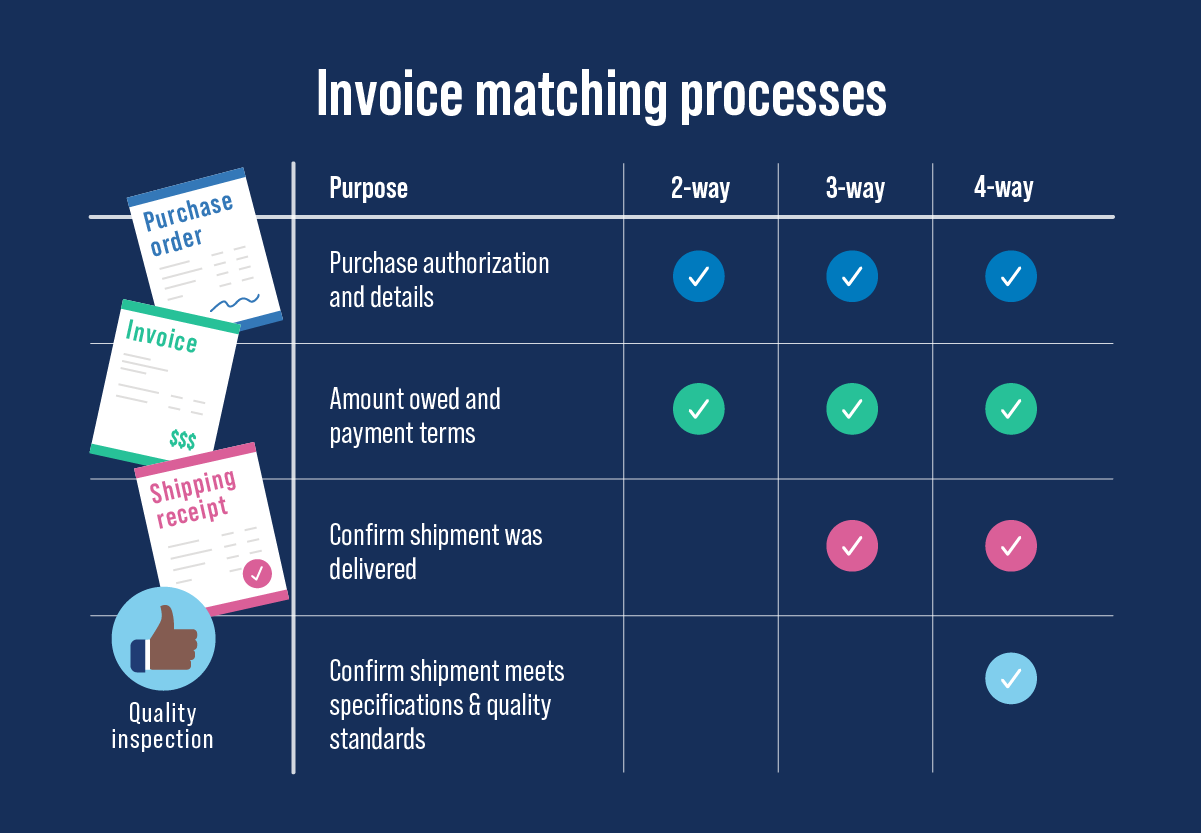
3-way matching
The three-way matching invoice process adds a step to match the invoice and PO to the shipping receipt. In 3-way matching, the AP clerk checks the shipping receipt header information and line items to confirm that the products and quantities BTB actually received match those on the PO and invoice.
Because it’s a slower and more complex matching method, BTB generally only uses 3-way matching for large or complex orders. For example, if a supplier sends an invoice for a full shipment but BTB only received a partial shipment, the AP clerk may check the shipping receipt to see if there’s an explanation for the incomplete shipment (product out of stock or back-ordered, etc.). If a product is on backorder and it’s a trusted supplier, BTB may pay the full invoice to maintain a good relationship with the supplier.
4-way matching
BTB uses 4-way matching to confirm that the received goods meet its manufacturing specifications and standards. In four-way matching, the invoice, PO, and shipping receipt are matched to an inspection or quality report. This allows BTB to check that the received goods meet the specifications, sustainability and environmental standards, and quality specified in the purchase order.
With accounts payable automation, BTB can eliminate manual processes and reach their goal of matching every invoice and PO. However, like many companies, they face some challenges when it comes to automating invoice matching.
Challenges with automating invoice and PO matching
Michelle and her CFO investigated the costs and benefits of automating PO and invoice matching. As we’ve seen, the benefits of automation are clear. However, Michelle learned there are five main challenges BTB would need to address before they could take full advantage of AP automation.
Challenge 1: Data variability
BTB’s suppliers send invoices in different formats (paper, PDF, email), and it’s not uncommon for invoices, POs, and shipping receipts to contain handwritten notes. The invoices are also complex, often containing hundreds of detailed line items. The finance operations platform must have the flexibility and power to capture, understand, and match variable data from different documents. It must also feature accurate exception handling to make the right decision when it is unsure of a match or detects a discrepancy.
Billy the Bot, Stampli’s AP automation solution, is trained on 10+ years of invoice, purchase orders (POs), and AP process data. It uses Stampli’s Cognitive AI™ technology, a breakthrough in AI-powered finance operations. Billy understands the nuances of finance operations and replicates human decision-making to improve process accuracy and efficiency. Stampli facilitates collaboration across departments to resolve discrepancies, speeds up invoice processing, and maintains accuracy between records. Stampli Cognitive AI reached the same conclusions as human operators 97% of the time, and Stampli expects that result to approach 100% as it gathers additional data from customer usage.
“This is my first time working with an AP system and Billy the Bot’s ability to fill in the coding after a few uses is amazing,” says a Stampli customer. “Instead of having piles of paper, everything is in one place. The upload process to our AS400 system is easy and all the data entering is almost eliminated.”
Challenge 2: Complex business rules and processes
BTB’s accounts payable department has been with the company for a long time. They’ve developed business processes and rules to ensure accountability, manage risk, and enforce internal controls. “Our AP team has like 100 years of combined experience and tribal knowledge,” says Michelle. “They’ve built bulletproof processes that keep us from losing money and I’m not changing them. Any automation system we bring in will not only have to be able to automate our AP workflows, but it also has to adapt to our processes instead of the other way around.”
To adapt to BTB’s existing rules and processes, the automation platform must be able to handle complex approval routing workflows with multiple approvers and rules. It must also be able to manage dynamic pricing and terms like volume discounts and rebates. Finally, it must handle partial deliveries and payments as well as non-PO and multiple-PO orders.
Stampli lets users select multiple POs for an invoice, partially bill POs, and apply multiple invoices to a PO for accurate processing and reporting. It also processes PO and non-PO invoices on the same platform for consistent and efficient invoice verification.
One customer says that Stampli “mainly solves the approval routing for AP. Without an AP automation tool, we would be either emailing digital invoices around for approval or, worse, passing a physical paper invoice around for signatures.”
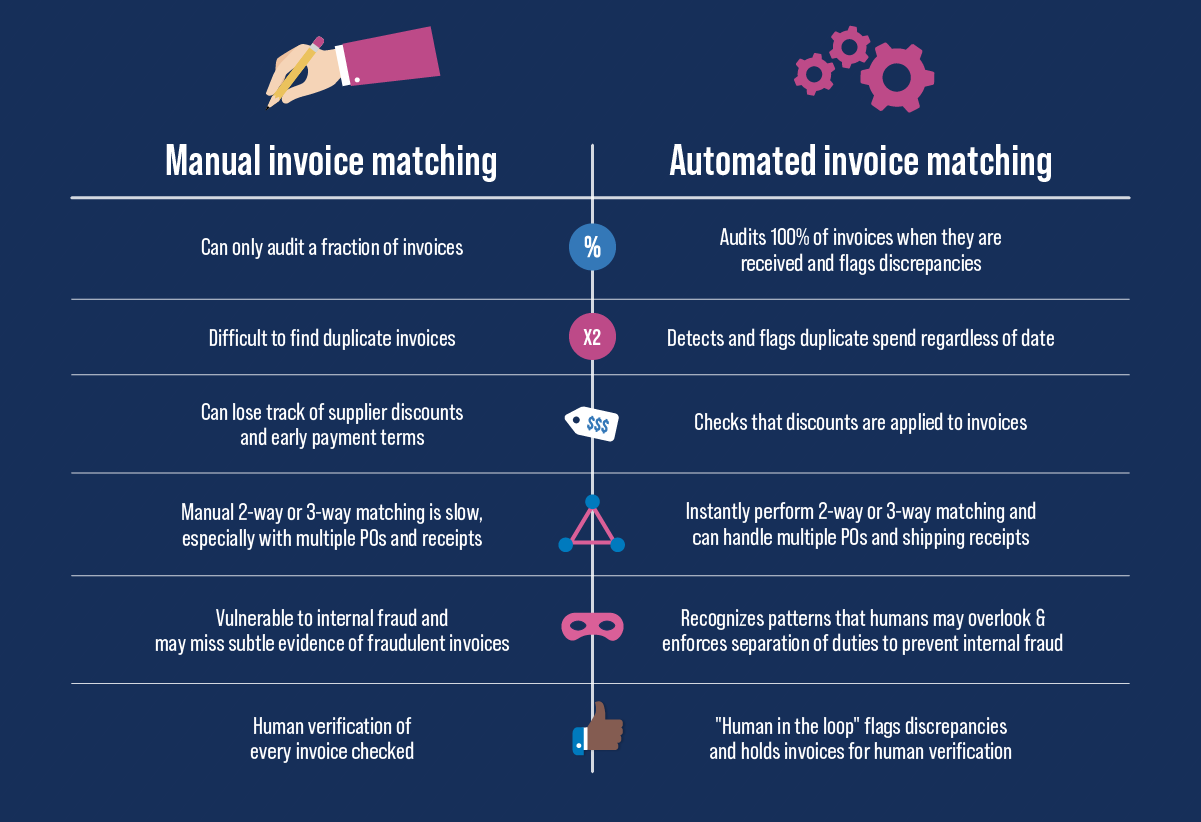
Challenge 3: Integrating with ERPs and business systems
BTB is implementing SAP S/4HANA to manage its manufacturing, procurement, and supply chain operations. The financial process automation solution must seamlessly integrate with SAP so BTB can streamline its procure-to-pay workflow. That means that to facilitate automated invoice matching, the solution must be able to sync real-time invoice, PO, and receipt data with SAP and handle approval workflows.
Many AP platforms offer SAP integration but fail to support SAP’s full native functionality or require extensive IT rework. Stampli’s pre-built SAP integrations can be implemented in days, not weeks, with no changes to SAP or your business processes.
Stampli supports true 2- and 3-way matching with SAP, including the ability to access live PO data to ensure invoices are being matched to the most up-to-date information. Stampli can also match received amounts and invoice amounts regardless of of what unit of measurement both documents use.
“I like the ability to search through invoicing history,” says a Stampli reviewer on G2. “I’m able to sort and filter invoices by Vendor, Location, Etc. It’s great being able to track information regarding any individual invoice. I am able to communicate with my teammates to answer questions and provide insights….
“My location just recently implemented SAP and we just recently started using the SAP version of Stampli. It’s making it much easier to reconcile Purchase Orders for payment.”
Challenge 4: Human judgment and regulatory requirements
Michelle admits she’s nervous about trusting AI to make financial decisions. “I don’t want to wake up one morning and discover the AI authorized spending a million dollars,” she says. “We need full control over every decision the system makes.”
To ensure human control over key decisions, the finance operations platform must be able to determine what decisions require human oversight and identify when it is making a suggestion. It should also be possible to establish rules that specify when the platform can make a decision without human oversight. The finance operations system must also adhere to tax laws and reporting standards to ensure BTB remains compliant with regulatory requirements.
As the leading finance operations platform with AI built in at every step of the AP process, Stampli designed its AI copilot, Billy the Bot, around two key principles: keeping humans in control and bringing AI efficiencies with human level decision making . When Billy makes a suggestion, a little Billy icon appears next to the field to let users review it. Users say Billy feels more like a trusted colleague than a faceless AI.
“I cannot forget about Billy,” said one Stampli customer in manufacturing. “Watching Billy learn the different business accounts, different approvers, and even how to split charges is awesome. He has been an integral part in making sure I make fewer mistakes and offers suggestions so I have less manual entry once the first few invoices of the vendor are in. No more flipping numbers accidentally [or] getting the date wrong. Billy will pull that information for you to make sure it is correct. Billy also gets smarter with time, so he is getting better at ‘guessing’ what an invoice covers.”
Bringing it all together
After looking at several finance operations platforms, BTB chose Stampli to automate its invoice processing workflows. “Stampli was the logical choice,” says Michelle. “It has a great track record of automating accounts payable, and it integrates with SAP without us needing to change our processes. But, the big factor for us was that it sees AI as a copilot for AP teams rather than a replacement.
By automatically coding and matching our invoices, Billy reduces manual tasks, freeing up over 20 hours per week per employee — almost a 50% reduction in our matching workload! By quickly spotting discrepancies and making it easy to resolve them, automation helps us process invoices 60% faster! We’re saving a lot of money on missed payments. Plus, now that my AP team isn’t bogged down with manual work, they can help with cash flow management and vendor relations, saving us even more money and time.”
Four steps to automating invoice matching
BTB followed a four-step, high-level process to implement automated invoice matching.
Step 1: Define the invoice-matching process, thresholds, & tolerances
The first step in designing an automated invoice-matching workflow is to map and document your current matching processes. Doing this will allow you to select the automated invoice processing solution that best fits your business.
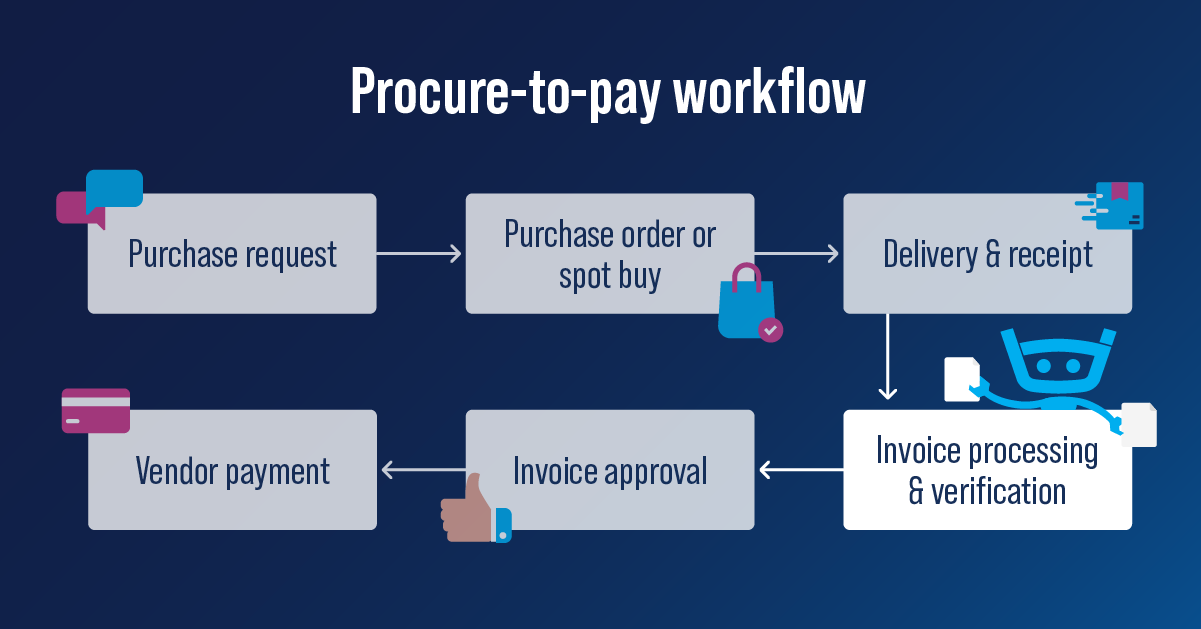
At the same time, decide on the tolerances for when your AP automation system should flag a discrepancy. For example, BTB allows for a 5% price difference between the PO and invoice for purchases under $5000, but only from certain vendors. They can establish a rule so the AI accepts such purchases for specific vendors but flags them for all other vendors.
In the same way, you can set your system to automatically verify high-value invoices, as those invoices are the most prone to fraud. You may also want to set thresholds for other variables like vendor past performance or new vendors.
Step 2: Identify stakeholders
After you’ve mapped your existing processes, identify the stakeholders involved in your procure-to-pay process and list their roles and responsibilities. For BTB, this includes its accounts payable team, purchasers, receivers, vendors, floor managers, and approvers. (“And now Billy,” says Michelle.)
Step 3: Centralize communications
The next step is to establish a centralized way for stakeholders to communicate. Good communication keeps everyone on the same page and keeps things from falling through the cracks. For BTB, that meant moving from emails, phone calls, and coffee chats to a simple, centralized communication channel with Stampli.
At the same time, BTB implemented Stampli’s Advanced Vendor Management, an advanced self-serve vendor portal. Advanced Vendor Management lets vendors submit invoices, ask questions, and check payment status. It also automatically ensures that vendors keep vital documents like contracts, licenses, and certifications current.
Step 4: Integrate with ERP and accounting systems
Integrate the finance operations platform with your ERP or accounting software. This lets the platform synchronize PO, invoice, and receipt data with your other business systems. It ensures the AP team can access the resources and data they need to match and verify invoices.
Stampli’s pre-built SAP S/4HANA seamlessly integrated with BTB’s ERP, providing its AP team with live PO data and letting them match POs and invoices almost instantly. “It’s amazing how fast Stampli transformed our matching process,” said Michelle. “Onboarding took a couple of days, and before you knew it, we could match every PO and invoice. It’s a total game-changer for us. We’re processing invoices faster, and we know exactly what we’re paying for. No more overpayments!”
Stampli: your ideal match for PO and invoice matching
Stampli is the only finance operations platform designed to meet the evolving needs of modern AP departments. Stampli simplifies invoice management by removing the need for external communication, ad-hoc solutions, and manual AP tasks. It allows AP teams to see every transaction and makes invoice matching, audits, and invoice approval processes effortless, enabling you to make informed strategic business decisions.
How Stampli Cognitive AI™ improves invoice verification
Stampli provides automated two- and three-way matching that lets your organization verify every invoice it receives. Through collaborative features like centralized communication and vendor document management, Stampli makes it easier for its AP team to investigate, identify, and correct discrepancies. It logs every action and communication to maintain a complete audit trail.
With over a decade of experience and extensive historical and process data,, Stampli’s Cognitive AI has evolved into a sophisticated system that thinks and works like an AP professional. Unlike other providers who add AI as an afterthought, cognitive “made-for-AP” AI has been central to Stampli since day one.
Billy understands language details, step-by-step logic, and complex AP scenarios for accurate and efficient processing. It replicates the workflows and logic of experienced AP professionals, handling complex scenarios just like a human. “Billy understands context and intricacies,” says Michelle. “It can match ‘300 yards of waterproof red nylon thread’ in a PO to ‘30 ten-yard spools of thread, red, nylon, waterproof’ in an invoice, making our invoice-matching process faster than ever!”
Stampli’s pre-built integrations support full native functionality for over 70 ERPs without IT rework or changes to existing AP processes. They automatically sync real-time PO and invoice data, making it easy for AP teams to verify invoices and prevent errors and fraud.
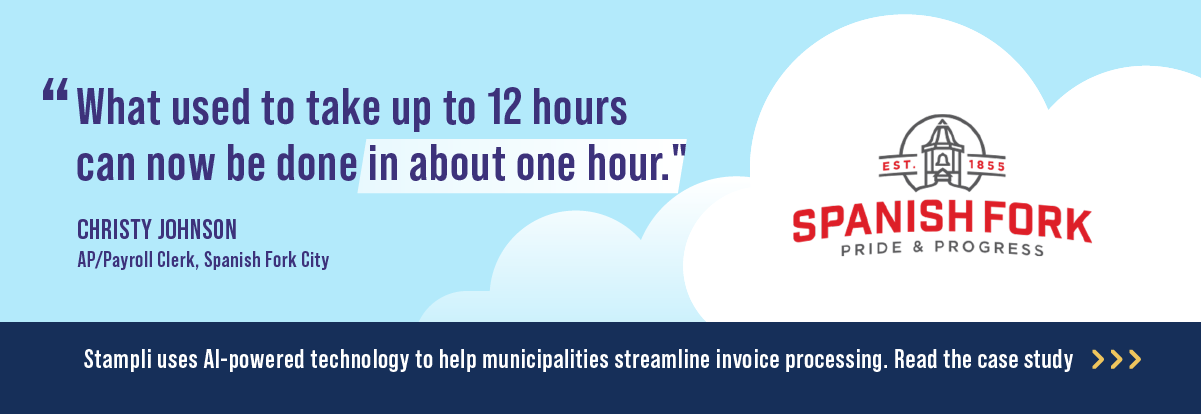
The case studies speak for themselves. Only Stampli delivers real results, helping businesses maximize invoice processing efficiency. Contact us today to set up a free demo.